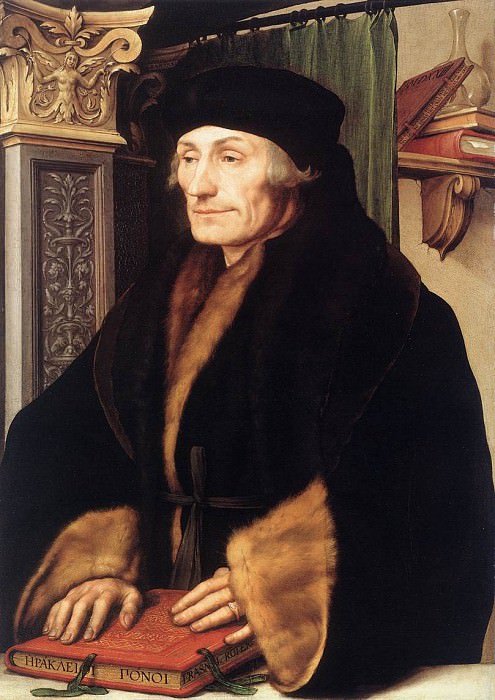Portrait of Erasmus of Rotterdam Hans The Younger Holbein
Hans The Younger Holbein – Portrait of Erasmus of Rotterdam
Edit attribution
Download full size: 809×1145 px (0,1 Mb)
Back to album: Hans The Younger Holbein
Hans Holbein the Younger was a German painter of the Northern Renaissance. One of the first artists to emphasize secular rather than religious subjects. Thus, Holbein won the favor of the public not only at home, but also abroad. The flowering of his career began in 1515, when he and his brother moved to Basle, a cultural center and university city. This event influenced his later career because it gave a significant boost to the development of the aspiring artist’s painting talent.
Description of Hans Holbein the Younger’s painting Erasmus of Rotterdam
Hans Holbein the Younger was a German painter of the Northern Renaissance. One of the first artists to emphasize secular rather than religious subjects. Thus, Holbein won the favor of the public not only at home, but also abroad.
The flowering of his career began in 1515, when he and his brother moved to Basle, a cultural center and university city. This event influenced his later career because it gave a significant boost to the development of the aspiring artist’s painting talent. After meeting Erasmus of Rotterdam, the greatest scholar, nicknamed the "prince of the humanists," Hans Holbein receives his first major commission for book illustration.
At the same time he paints a portrait of Erasmus of Rotterdam, which instantly brings him fame. In this painting he showed himself as an innovator, deliberately abandoning the Gothic tradition of writing, which until that moment prevailed in German painting of the 16th century. The master’s pictorial work has a characteristic plastic modeling, so his stylistics cannot be confused with other authors of the period. The first thing that comes to mind when looking at a portrait of a scholar is the meticulousness, precision and restraint of the author himself.
There is not a hint of invention in the portrait, so accurately everything is drawn. It was not without reason that Holbein was called the master of drawing, not of painting. Before making a portrait, he would meticulously trace it and fill it with all the necessary details, and then he would draw it pictorially. The painter’s portrait of Erasmus of Rotterdam is full of dignity and serenity.
This canvas became one of the most important works of the Basel period in his oeuvre. The specificity of the transfer of reality is peculiar only to Holbein - realistic skill of the artist and lack of emotional coloring in the faces of the portrayed. The portrait genre is the area of painting where Holbein realized himself as an artist.
Кому понравилось
Пожалуйста, подождите
На эту операцию может потребоваться несколько секунд.
Информация появится в новом окне,
если открытие новых окон не запрещено в настройках вашего браузера.
You need to login
Для работы с коллекциями – пожалуйста, войдите в аккаунт (open in new window).




















You cannot comment Why?